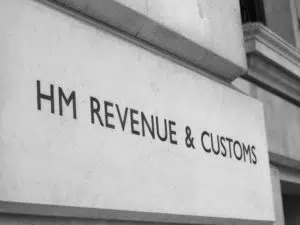
This is a serious matter and it is important to take immediate action to address the situation.
It is important to act quickly and decisively in this situation, as a winding up petition can have serious consequences for your business and personal finances.
This could leave you and your directors personally liable for any unpaid crown debts.
A winding up petition from HMRC is a very serious matter and you should seek professional advice for one of our team as soon as possible.
What are HMRC winding up petitions?
HMRC winding-up petitions are formal legal actions initiated by the UK’s HM Revenue & Customs against companies that have outstanding tax liabilities.
When a company fails to settle its tax debts, such as Corporation Tax, VAT, or PAYE, despite repeated reminders and demands, HMRC may resort to presenting a winding-up petition to the court as a last measure.
If upheld by the court, this petition can lead to the company being placed into compulsory liquidation, where its assets are sold off to repay the owed debts.
It’s a severe step, indicating the culmination of persistent non-payment, and can have profound implications for the company’s operations and its directors’ responsibilities.
Why do HMRC issue winding up petitions?
HMRC will issue a winding up petition if you have unpaid tax debts and you have ignored the reminders asking for payment. They will use this method to collect:
- Corporation Tax
- VAT
- PAYE arrears
HMRC only tend to issue petitions for sums above £20,000, although there is a set limit that the debt must be at least £750.
What to do if have received a HRMC winding up petition?
If you have received a winding up petition from HMRC, you should not ignore it. The next step will be a court hearing and your company could be wound up and put into compulsory liquidation. You must act quickly and one key date to look at is the date of the winding up hearing, but this does not represent how much time you have to take action, as, for example, the petition can be advertised as early as seven business days from service. Advertisement of the petition will freeze your bank accounts.
Some directors think that they have until the date of the court hearing date, but they do not. Once the winding up process has started all ‘dispositions’ (transactions) are void if the company subsequently goes into liquidation. This means you cannot carry out any transactions as they will be void if the winding up order is made.
Once you have received the winding up petition you should consider the following courses of action:
- Check to see if the amount claimed is correct. Is it based on any estimated figures? If in doubt, ask your accountant to check it. If the figures are wrong, you should contact HMRC immediately.
- If the amount claimed is correct, can you afford to pay it off? If yes, you should do so but not to the detriment of other creditors, as all creditors need to be treated equally.
- If you cannot afford to pay the sum claimed then you still have some options, but these will usually involve an insolvency process.
What should you do if you cannot pay the debt?
If you cannot pay the debt, you have some options:
- One is to ask HMRC for a time to pay arrangement and ask them to withdraw the petition. They may, in a small number of cases, agree but will ask you to pay all the legal costs of the petition immediately.
- You could also ask the court to adjourn the first hearing to give you more time. The court is reasonably likely to say yes to that if you have a good reason.
- You could also talk to a licensed Insolvency Practitioner (IP) about your options. This may be to go into administration beforehand. It could also mean a company voluntary arrangement (CVA) or a creditors voluntary liquidation (CVL).
What is the difference between a compulsory liquidation and a creditors voluntary liquidation (CVL)?
A compulsory liquidation is where you are forced into liquidation by a court driven process. The first liquidator that you deal with will be the Official Receiver at the Insolvency Service. If the company’s affairs are complicated, they may hand the case onto a licensed IP who is sometimes chosen by a majority of creditors.
A creditors voluntary liquidation (CVL) is the process of liquidation driven by the directors deciding to close and liquidate. A meeting of shareholders and creditors to agree the decision will be called. It may not sound voluntary, but it is because the directors decide to do it. It is a faster process than compulsory liquidation and can be usually be done in seven to 14 days.
Read more: received a petition from a creditor
Conclusion
A winding up petition from HMRC is a serious matter and should not be ignored. It means that HMRC believes that your company is unable to pay its debts and is seeking to have the company dissolved and its assets sold to pay creditors. If you receive a winding up petition, it is important to act quickly and seek professional advice from a qualified solicitor or insolvency practitioner.
You may be able to negotiate a payment plan with HMRC or challenge the petition if it has been issued incorrectly. Ignoring the petition or failing to take action could result in the closure of your business. Contact us today to talk though your options by simply completing the online enquiry form or on 01246 912052.
With over three decades of experience in the business and turnaround sector, Steve Jones is one of the founders of Business Insolvency Helpline. With specialist knowledge of Insolvency, Liquidations, Administration, Pre-packs, CVA, MVL, Restructuring Advice and Company investment.
